- Home
- Jules Verne
Twenty Thousand Leagues Under the Sea (Barnes & Noble Classics Series) Page 2
Twenty Thousand Leagues Under the Sea (Barnes & Noble Classics Series) Read online
Page 2
1883 Scottish writer Robert Louis Stevenson’s novel Treasure Island is published. War in Indochina breaks out.
1884 Verne voyages to Italy, where Pope Leo XIII personally blesses his work.
1885 Victor Hugo dies. English novelist Henry Rider Haggard publishes King Solomon’s Mines.
1886 Verne’s deranged nephew, Gaston, shoots him in the leg, laming him for life. This personal disaster, and his growing cynicism about industrialization, marks a turn toward pessimism in Verne’s outlook and writing. His longtime publisher, Hetzel, dies. Verne sells the Saint-Michel III because of financial concerns. Robert Louis Stevenson publishes Dr. jekyll and Mr. Hyde.
1887 Verne’s mother dies.
1888 Verne is elected to the municipal council of Amiens, where he will serve for fifteen years.
1889 Sans dessus dessous (Topsy-Turvy) appears, which contains notably negative views on the potential of technology. His later novels will take on various forms of social injustice, from the plight of orphans to the corrupting power of missionaries in foreign lands.
1895 English novelist H. G. Wells’s The Time Machine is published.
1897 Le Sphinx des glaces (The Ice Sphinx), written as a sequel to Poe’s 1838 novel The Narrative of Arthur Gordon Pym, is published. Flagging health plagues Verne. His brother Paul dies. English writer Rudyard Kipling’s Captains Courageous and Edmond Rostand’s play Cyrano de Bergerac are published.
1899 Verne’s Le testament d‘un excentrique (The Will of an Eccentric) deals with the oil industry’s ravages of the environment.
1905 Leaving a drawer filled with manuscripts, and with his fam- ily gathered at his bedside, Jules Verne dies of complications from diabetes. He is buried in Madeleine Cemetery in Amiens. His posthumously published novels, altered considerably by his son, Michel, remain a source of scholarly debate and interest.
Introduction
The book you hold in your hands is considered by many Jules Verne readers to be his masterpiece. Serialized in a widely read French family magazine in 1869 and 1870 and published in two volumes in those same years, it was Verne’s seventh successful novel. As is true of much of his fiction, in Twenty Thousand Leagues Under the Sea Verne capitalized on the spirit of the time, incorporating up-to-the-minute scientific data in a pulse-quickening adventure plot. Verne’s mission as a novelist, he wrote, was to “depict in novel format the entire Earth, the whole world, by imagining adventures unique to each country and by inventing characters indigenous to the habitats in which they live” (quoted in Evans, Jules Verne Rediscovered: Didacticism and the Scientific Novel, p. 30; see “For Further Reading”). By all accounts, he succeeded, originating a fictional genre, writing in a voice at once unique and universal, and for forty years feeding his devoted readers a steady diet of extraordinary fiction based on scientific fact.
France had never seen anything like Verne. His readers touted him as a genius, a soothsayer, a visionary. His fourth book, From the Earth to the Moon, was so popular it elicited requests from single French women wishing to accompany Verne to the lunar landscape in his new space-going vessel. “Parisians are certainly brave,” Verne wrote in a letter after publication of that book. “Some of them are determined by hook or crook to embark on my projectile” (quoted in Teeters, Jules Verne: The Man Who Invented Tomorrow, p. 62). His reputation grew, and his works were reportedly translated into more languages than Shakespeare’s plays. “Take a young English boy and put half of Twenty Thousand Leagues Under the Sea in his hand, in translation; then give him the other half in French; and that boy will figure out a way to try to understand,” said British author and Verne enthusiast Rudyard Kipling (quoted in Lynch, Jules Verne, p. 112). Verne never let his readers down, publishing more than sixty novels and some twenty short stories, as well as a few dozen plays. Even one hundred years after his death, a new generation of Verne fans can see his plots through Disney’s lens. His enduring popularity is a testament to the human appetite for fantasies brought to life.
Among Verne’s mountain of novels collectively known as Extraordinary Voyages, Twenty Thousand Leagues Under the Sea stands out. In it, Verne used techniques he perfected in his previous books. Near-death beneath the ice caps and strangulation in the tentacles of giant squids made his readers squirm in their armchairs, while observation windows and an encyclopedia-toting sidekick educated as they entertained. At times remarkably lyrical, at other times strictly scientific, Verne’s writing took readers places they had never gone before—indeed, to places few of them had even imagined. But unlike in his other novels, in Twenty Thousand Leagues Under the Sea he did more than paint a realistic picture of an unreal voyage. The book is Verne’s masterpiece not for the wonders of the sea he describes, but for the realistic creation of a singular man. It’s Captain Nemo, to the maelstrom and to the end.
In his other books, Verne’s heroes are acted upon. The outside world intrudes on the voyage of discovery; it supplies the adventure and propels the books, and their narrators, onward. In Twenty Thousand Leagues Under the Sea, Verne turns the drama inward by making Nemo the central figure and the propelling force. The book follows the adventures of Verne’s scientist-hero, Aronnax, and his two friends Ned Land, the harpooner, and Conseil, Aronnax’s manservant, during a period of captivity and scientific discovery in Captain Nemo’s submarine. It is through Nemo’s genius and his secret (and possibly malevolent) motives that the three captives find themselves on their voyage. Verne knew that, for the book to work, Nemo had to be almost larger than life. “It is important that this unknown character refrain from contact with other human beings, from whom he lives apart,” wrote Verne in a letter to his publisher. “He is no longer on earth, he manages without the earth” (quoted in Lottman, Jules Verne: An Exploratory Biography, p. 130). A natural leader living on a ship inhabited by a crew of ghostlike men, a noble scientist in search of the unknown, a child marveling at the bounty of the seas, a genius and a lunatic, Nemo is the most complex character Verne ever created. He destroys ships without conscience and yet cries over lost companions. He is genial, affable, and terrible all at once. Nemo is Verne’s work of genius, ranking alongside Melville’s Captain Ahab and London’s Sea Wolf as the most fearsome and complex man sailing the fictional seven seas.
But what combination of luck and craft brought Verne to Nemo, or Nemo to Verne? For a writer whose pen traveled more than sixty times over continents and through atmospheres, how did Twenty Thousand Leagues Under the Sea come to be Verne’s masterpiece? And how did Verne—part bourgeois, part bohemian—become the grandfather of scientific fiction, the creator of a new genre in the world of letters, and the master of extraordinary voyages?
Jules Verne was born on February 8, 1828, in Nantes, France, a prosperous commercial port still thriving at the tail end of the French maritime boom and the African slave trade. He grew up watching three-masted schooners glide into the harbor and studying the workings of steel-making machines that fed the maritime industry. His father was a successful provincial lawyer and a devout Catholic, his mother a gifted lyricist with the temperament of a poet. As a child, he read James Fenimore Cooper, Sir Walter Scott, Charles Dickens, and Victor Hugo. He also read Daniel Defoe’s Robinson Crusoe and Johann Wyss’s The Swiss Family Robinson, survival tales that captured his imagination. “It is man set out on his own, solitary man, the one who one day finds the imprint of a bare foot on the soil,” Verne wrote in his incomplete memoir. “It is a family: father, mother, and children, with their diverse talents. How many years did I spend on their island! How eagerly I became wrapped up in their discoveries! How much I envied their fate” (quoted in Lynch, p. 20).
Verne was the first of five children. His closest brother, Paul, would go on to become a naval officer. But in an age when fathers more or less controlled the fate of their first-born sons, Verne would not be allowed to indulge his fantasies of traveling on the open seas. After a spotty academic history in primary and secondary school—“studious children invariably t
urn into half-witting grownups,” he wrote (quoted in Schoell, Remarkable Journeys: The Story of Jules Verne, p. 13)—Verne followed his father’s plan and enrolled at law school in Paris. He studied the first year in Nantes, then moved to the capital in the winter of 1848 to be closer to his classes.
“I came to Paris as a student just about the time when the grisett [prostitute] and all that she meant was disappearing from the French Quarter,” Verne wrote in his memoir (quoted in Lottman, p. 20). He also arrived on a tight budget, prescribed by a father wary of the distractions available to a young man alone for the first time in the capital.
Verne’s early life in Paris was far from easy. His father wasn’t sending him enough money to live even meagerly, and his health suffered as a result. He detailed his hardships in his letters home. The majority of the letters were spent accounting for daily expenses, detailing how much he spent on food and how much on clothes: “My accursed watch is costing me six francs in repairs, my umbrella fifteen francs, and I had to buy a pair of boots and a pair of shoes” (Lottman, p. 26). He bragged about finding a complete edition of Shakespeare for a bargain, but he complained at not having anything good to eat. “Ever since my arrival in Paris there hasn’t been a moment without a stomach ache,” he wrote to his parents (Lottman, p. 25). Occasionally, half of his face would fall into paralysis. He was tired. He was studying all the time, and, he complained to his parents, his law examinations would be “frightful.”
These letters served two purposes. First, they convinced his father that he was living frugally and concentrating on his schoolwork. Second, they hid from his father his developing passion: Verne wanted to write for the stage.
It was a golden age for French theater, very similar in some ways to Hollywood in the 1940s. A modestly successful playwright could expect to make enough money staging a mediocre play to support himself in style. A popular playwright would be celebrated and revered. Through a series of connections, Verne met and befriended Alexandre Dumas, author of the celebrated historical novel The Three Musketeers and one of the most successful playwrights of his time. Dumas and his son in turn introduced the young and ambitious Verne to others in their theatrical circles. They even collaborated with Verne on some of his works.
At the same time, Verne became a periodic contributor to Musée des familles (The Family Museum), an educational magazine run by a friend from school. Verne’s work for the magazine took him to the Paris library, where he spent long hours gathering facts and culling through recent documentation on notable scientific events. He read about a hot-air balloon, Le Giant, that was three times larger than any balloon previously launched. He discovered articles on the famed 140-foot submarine Le Plongeur, the first to be powered by compressed air. He discovered Robert Fulton, who around 1800 had built a prototypical submarine, the Nautilus, which stored enough air to sustain its two-man crew for a five-hour dive.
Through his reading, he became familiar with the major scientific and mechanical inventions of his time and developed an active interest in the quickening progress of technical discoveries. Once his research was complete, he put together fictional stories that highlighted the facts he had discovered. (He inserted bits of naval history into his story “The First Ships of the Mexican Navy” and recounted the push to discover the North Pole and the hardships of an Arctic winter in “A Winter in the Ice.”) Despite the hard work and long hours, his stories failed to bring him success; his name was even misspelled in at least two magazines. But his effort was far from wasted: Although he could not know it at the time, Musée des familles introduced him to a form of writing that would become his mainstay.
His fiction was at best an extra paycheck once in a while, but it was also a distraction from the art of the stage. During Verne’s early years in Paris, he wrote about twenty-five plays, including comedy, farce, plays in verse, high tragedy, and musicals; while some were well received, most never made it to the stage. Still, the experience taught Verne valuable lessons. At the end of this period—what some have called his apprenticeship—he could write dialogue and invent plots, and he knew what it was to try and fail. Most importantly, his experience showed him that despite his father’s wishes, he felt a true passion for writing. “There are serious studies to be done on the present genre of literature,” Verne wrote in a letter, “and especially on that of the future” (quoted in Evans, p. 17).
When he graduated from law school, he had to make a choice: either return to Nantes to take over his father’s law practice and lead what he saw as a comfortable but bloodless life, or remain in Paris to write. After years spent trying to convince his father of his commitment to the law, Verne took a new direction. Even while asking for his father’s continued economic support, Verne admitted he had no passion for law. “My dear father,” Verne wrote, “whether I do law for a couple of years or not, if both careers are pursued simultaneously, sooner or later one of them will destroy the other.... And in my opinion, the bar would not survive” (Evans, p. 17). He went so far as to warn his father that if forced to return to Nantes, he would ruin his father’s practice. Eventually his father agreed to let him stay in Paris to write.
By 1856, after five years spent trying unsuccessfully to make a living from writing—and five years’ begrudging economic support from his judgmental father—Verne started to doubt his prospects. “It is as if the moment I get an idea or launch any literary project, the idea or project at once goes wrong,” Verne wrote to his father. “If I write a play for a particular theater director, he moves elsewhere; if I think of a good title, three days later I see it on the billboards announcing someone else’s play; if I write an article, another appears on the same subject. Even if I discovered a new planet, I believe it would at once explode, just to prove me wrong” (quoted in Teeters, p. 45). Faced with failure, Verne indicated he might be ready to return to a professional life. “While I tend to my art, I am quite capable of devoting time and energy to another job,” he wrote in a letter home (quoted in Lottman, p. 69).
To complicate matters, Verne wanted to find a wife. “I want to marry, I must marry, I should marry,” he wrote in a letter home (Lottman, p. 67). “It’s the perfect time to get married, my dear mother, so I ask you to get to work. Find the way to present me as a good husband” (Lottman, p. 55). In order to attract a wife, Verne knew he needed to find steady employment and so, in 1856 when he met a wealthy, twenty-six-year-old widow named Honorine Morel, he chose a new career. Asking his father for seed money to invest in a stock brokerage firm, he proposed to Honorine, secured a job, and was soon married. The wedding ushered in another five years of hard work for Verne. In addition to supporting a family by buying low and selling high on the Paris stock market, he rose every morning at dawn to write for five hours before going to work. This period lasted until 1862, when Verne’s manuscript Five Weeks in a Balloon found its way into the hands of publisher Pierre-Jules Hetzel and his successful career as a writer of scientific fiction began. “My friends, I bid you adieu,” Verne is reported to have said to his stock exchange friends. “I’ve had an idea ... an idea which should make me rich. I’ve just written a novel in a new style, truly my own. If it succeeds, it will be a gold mine. So, I’ll continue to write and write ...” (quoted in Evans, p. 21)
That, of course, is exactly what he did.
Major cultural forces contributed to Verne’s success. In 1850 a French law (Le Loi Farroux) declared that all scientific education in the nation’s secondary schools was to be controlled by the Catholic Church. The law had a devastating effect on two generations of French students. At a time when European and American scientists were discovering steam and electricity, as the phonograph and the telephone were created, while tram and railroad tracks were laid down the world over, the French government closed its eyes and stuffed its ears. “Any retreat from classical studies has the effect of shaking the very foundations of Christianity,” wrote Archbishop Kopp (Evans, p. 13), summarizing the reactionary sentiments of the time. In France sc
ience became an instrument of politics, and education vacillated between the Romantic ideal of classics-based studies and the religious ideal of the Bible. The backlash against science was profound and harsh. Romantic poets, watching the plundering of nature to feed the industrial revolution, wrote love songs to nature and recommended a return to a “natural” way of life.
In the gap created on the one side by scientific discoveries and the march of industrial progress, and on the other side by reactionary educational practices, Verne found his home. With the help of his shrewd publisher, Pierre-Jules Hetzel, and Hetzel’s showpiece publication, Magasin d’education et de recreation (Magazine of Education and Recreation), within a year of the publication of the novel Five Weeks in a Balloon Verne’s name was known throughout France.
Hetzel had been a successful and influential publisher in Paris until, in 1851, French Emperor Napoleon III banished him from the country. Even while living in exile, Hetzel had managed to bring to print some of the most important French writers of his time, including Balzac, Hugo, Lamartine, de Vigny, and Sand. During the amnesty of 1859, Hetzel returned to Paris with a new mission. Instead of “art for art’s sake,” or high literature, Hetzel targeted an emerging market created by France’s changing education system. Founding the handsome bimonthly Magazine of Education and Recreation, Hetzel sought fiction and articles that educated as they entertained. Verne, with his experience writing stories for Musée des familles and his self-education through years of scientific research, turned out to be the very man Hetzel was looking for. When Verne approached Hetzel with his manuscript, Hetzel snapped it up. If Verne agreed to rework the text into an adventure story, Hetzel would publish the story in his magazine. Beyond that, Hetzel offered Verne a long-term contract, and one of the most productive relationships in modern literary history was born.

 Michael Strogoff; Or the Courier of the Czar: A Literary Classic
Michael Strogoff; Or the Courier of the Czar: A Literary Classic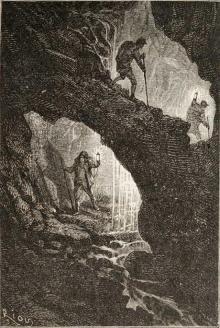 Voyage au centre de la terre. English
Voyage au centre de la terre. English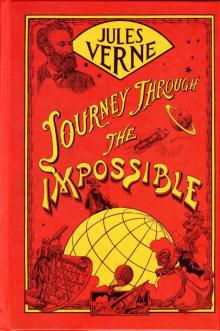 Journey Through the Impossible
Journey Through the Impossible The Castaways of the Flag
The Castaways of the Flag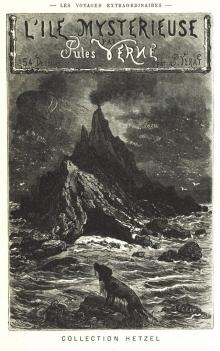 L'île mystérieuse. English
L'île mystérieuse. English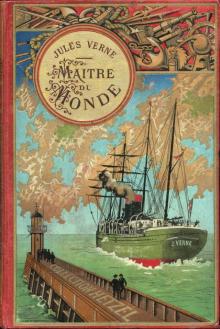 Maître du monde. English
Maître du monde. English Around the World in Eighty Days
Around the World in Eighty Days A Voyage in a Balloon
A Voyage in a Balloon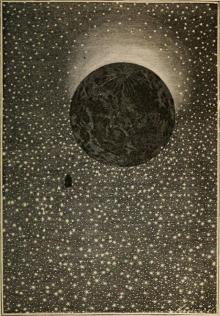 From the Earth to the Moon, Direct in Ninety-Seven Hours and Twenty Minutes: and a Trip Round It
From the Earth to the Moon, Direct in Ninety-Seven Hours and Twenty Minutes: and a Trip Round It Paris in the Twentieth Century
Paris in the Twentieth Century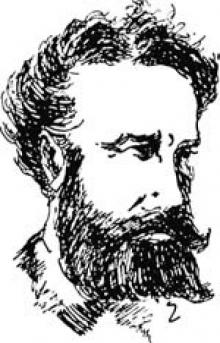 City in the Sahara - Barsac Mission 02
City in the Sahara - Barsac Mission 02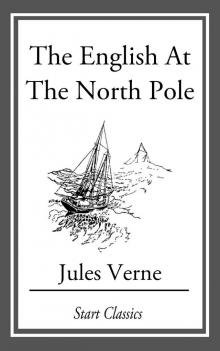 The English at the North Pole
The English at the North Pole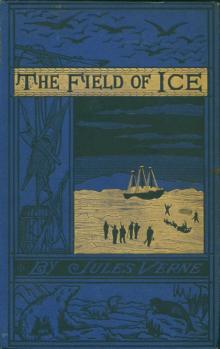 The Field of Ice
The Field of Ice From the Earth to the Moon
From the Earth to the Moon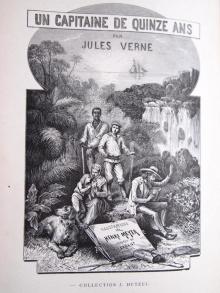 Un capitaine de quinze ans. English
Un capitaine de quinze ans. English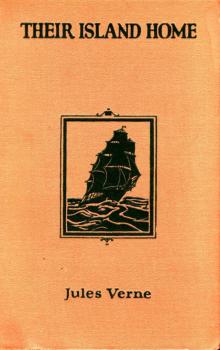 The Mysterious Island
The Mysterious Island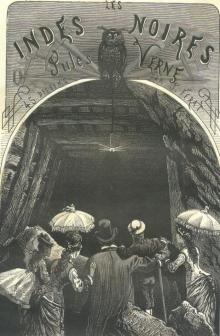 Les indes-noirs. English
Les indes-noirs. English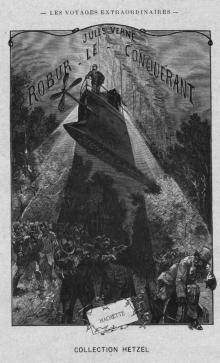 Robur-le-conquerant. English
Robur-le-conquerant. English Propeller Island
Propeller Island Around the World in Eighty Days. Junior Deluxe Edition
Around the World in Eighty Days. Junior Deluxe Edition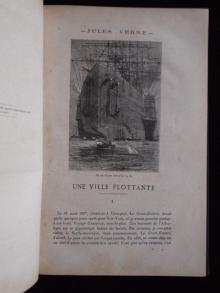 Les forceurs de blocus. English
Les forceurs de blocus. English In the Year 2889
In the Year 2889 Journey to the Centre of the Earth
Journey to the Centre of the Earth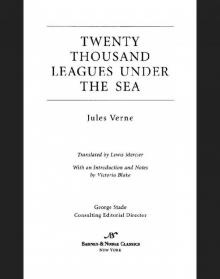 Twenty Thousand Leagues Under the Sea
Twenty Thousand Leagues Under the Sea From the Earth to the Moon; and, Round the Moon
From the Earth to the Moon; and, Round the Moon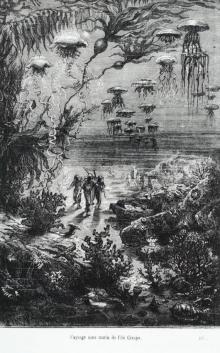 Vingt mille lieues sous les mers. English
Vingt mille lieues sous les mers. English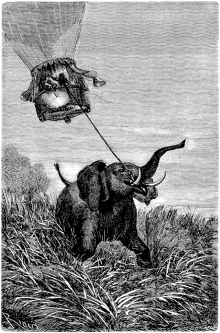 Cinq semaines en ballon. English
Cinq semaines en ballon. English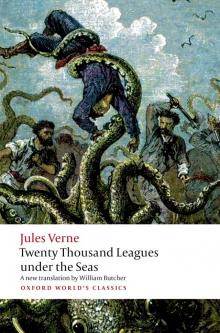 Twenty Thousand Leagues under the Seas
Twenty Thousand Leagues under the Seas Face au drapeau. English
Face au drapeau. English Michael Strogoff; Or, The Courier of the Czar
Michael Strogoff; Or, The Courier of the Czar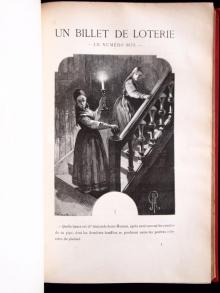 Un billet de loterie. English
Un billet de loterie. English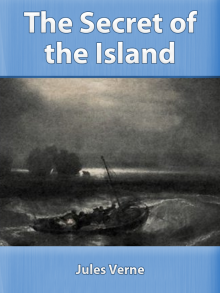 The Secret of the Island
The Secret of the Island Off on a Comet! a Journey through Planetary Space
Off on a Comet! a Journey through Planetary Space Into the Niger Bend: Barsac Mission, Part 1
Into the Niger Bend: Barsac Mission, Part 1 All Around the Moon
All Around the Moon A Journey to the Center of the Earth - Jules Verne: Annotated
A Journey to the Center of the Earth - Jules Verne: Annotated 20000 Lieues sous les mers Part 2
20000 Lieues sous les mers Part 2 Robur-le-Conquerant
Robur-le-Conquerant Les Index Noires
Les Index Noires Michael Strogoff; or the Courier of the Czar
Michael Strogoff; or the Courier of the Czar 20000 Lieues sous les mers Part 1
20000 Lieues sous les mers Part 1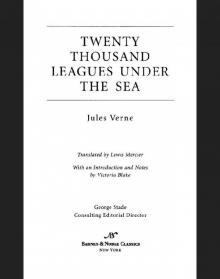 Twenty Thousand Leagues Under the Sea (Barnes & Noble Classics Series)
Twenty Thousand Leagues Under the Sea (Barnes & Noble Classics Series)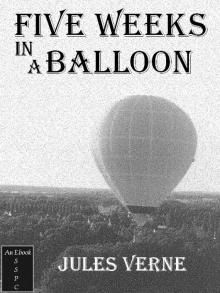 Five Weeks In A Balloon
Five Weeks In A Balloon Journey to the Center of the Earth
Journey to the Center of the Earth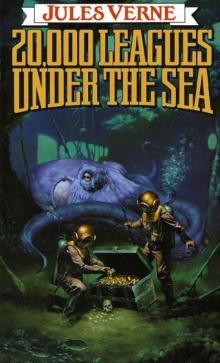 20,000 Leagues Under the Sea
20,000 Leagues Under the Sea Journey to the Center of the Earth (Barnes & Noble Classics Series)
Journey to the Center of the Earth (Barnes & Noble Classics Series)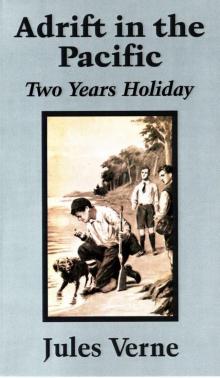 Adrift in the Pacific-Two Years Holiday
Adrift in the Pacific-Two Years Holiday The Collected Works of Jules Verne: 36 Novels and Short Stories (Unexpurgated Edition) (Halcyon Classics)
The Collected Works of Jules Verne: 36 Novels and Short Stories (Unexpurgated Edition) (Halcyon Classics) The Survivors of the Chancellor
The Survivors of the Chancellor Their Island Home
Their Island Home Le Chateau des Carpathes
Le Chateau des Carpathes Les Cinq Cents Millions de la Begum
Les Cinq Cents Millions de la Begum The Floating Island
The Floating Island Cinq Semaines En Ballon
Cinq Semaines En Ballon Autour de la Lune
Autour de la Lune